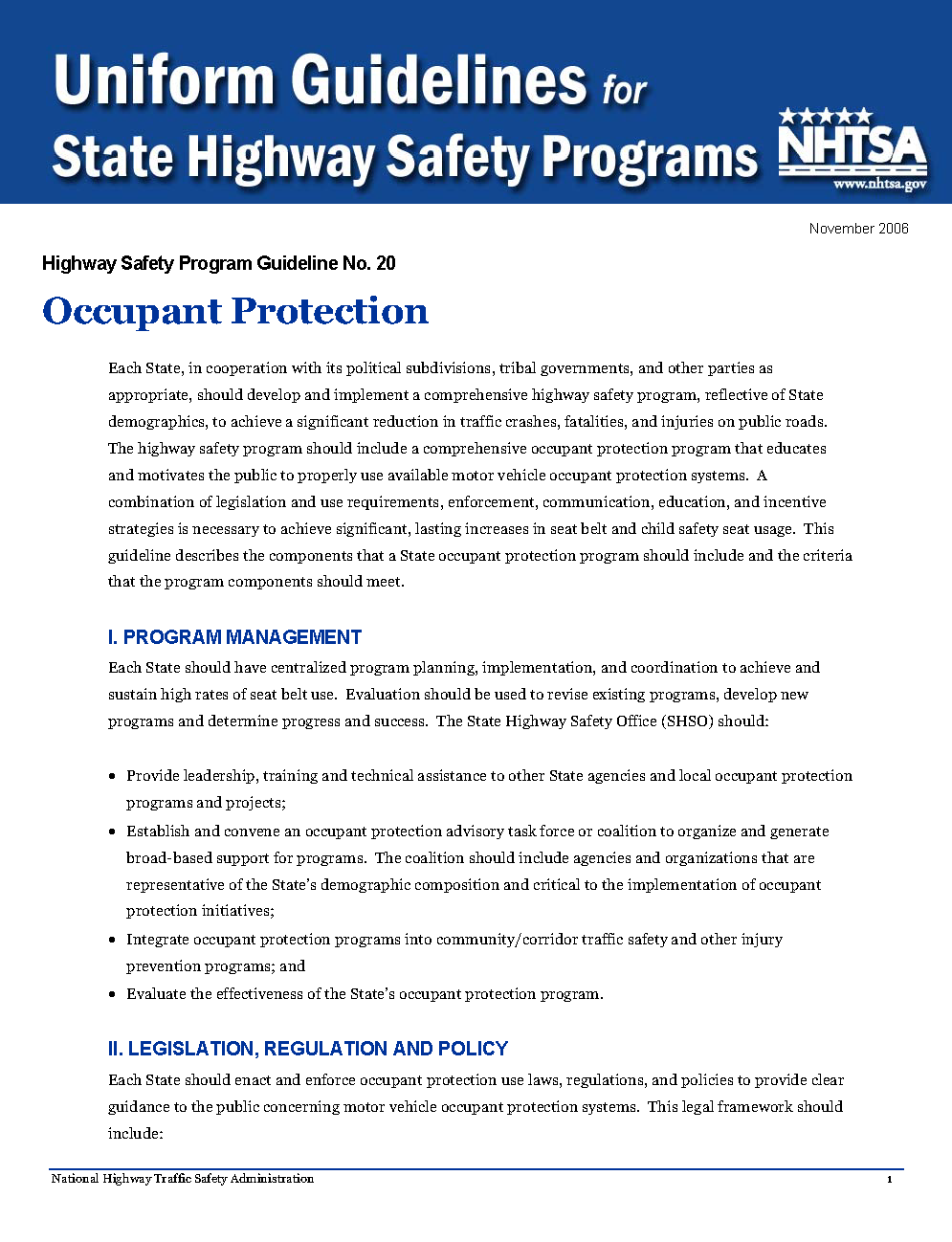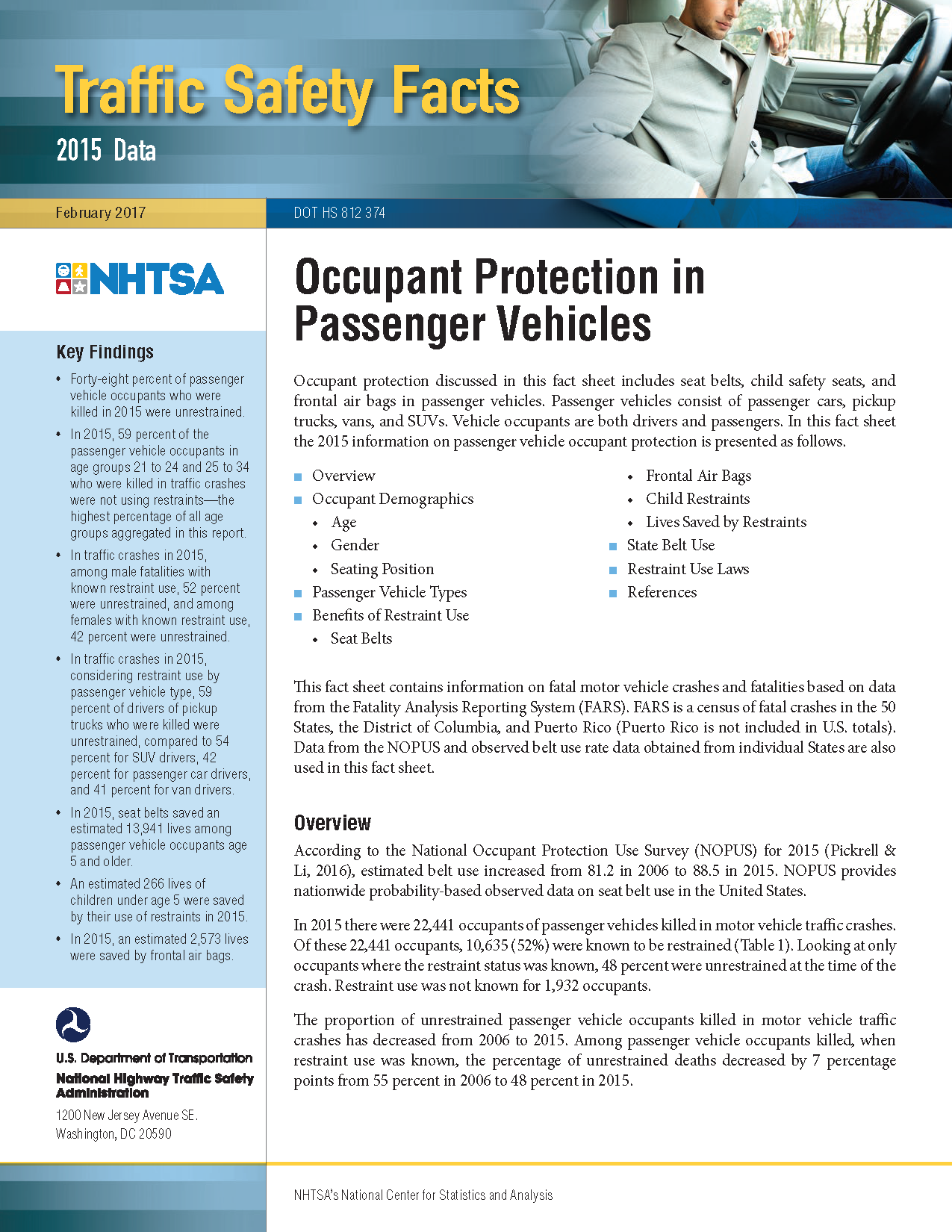Occupant Protection/Child Passenger Safety: Laws & Data
 GHSA: Seat Belt Laws by State
GHSA: Seat Belt Laws by State
All states and territories require child safety seats for infants and children fitting specific criteria, but requirements vary based on age, weight and height. Often, this happens in three stages: infants use rear-facing infant seats; toddlers use forward-facing child safety seats; and older children use booster seats.
Many laws require all children to ride in the rear seat whenever possible, and most states permit children over a particular age, height or weight to use an adult safety belt.
First offense fines for not complying with a state's child passenger safety laws vary from $10 to $500. Some states also use driver's license points as an additional penalty for noncompliance. Read More >>
 NHTSA: Uniform Guidelines for State Highway Safety Programs, Highway Safety Program Guideline No. 20 – Occupant Protection
NHTSA: Uniform Guidelines for State Highway Safety Programs, Highway Safety Program Guideline No. 20 – Occupant Protection
Each State, in cooperation with its political subdivisions, tribal governments, and other parties as appropriate, should develop and implement a comprehensive highway safety program, reflective of State demographics, to achieve a significant reduction in traffic crashes, fatalities, and injuries on public roads. The highway safety program should include a comprehensive occupant protection program that educates and motivates the public to properly use available motor vehicle occupant protection systems. A combination of legislation and use requirements, enforcement, communication, education, and incentive strategies is necessary to achieve significant, lasting increases in seat belt and child safety seat usage. This guideline describes the components that a State occupant protection program should include and the criteria that the program components should meet.
 NHTSA: Traffic Safety Facts - Occupant Protection in Passenger Vehicles
NHTSA: Traffic Safety Facts - Occupant Protection in Passenger Vehicles
Occupant protection discussed in this fact sheet includes seat belts, child safety seats, and frontal air bags in passenger vehicles. Passenger vehicles consist of passenger cars, pickup trucks, vans, and SUVs. Vehicle occupants are both drivers and passengers. This fact sheet contains information on fatal motor vehicle crashes and fatalities based on data from the Fatality Analysis Reporting System (FARS). FARS is a census of fatal crashes in the 50 States, the District of Columbia, and Puerto Rico (Puerto Rico is not included in U.S. totals). Data from the NOPUS and observed belt use rate data obtained from individual States are also used in this fact sheet.



